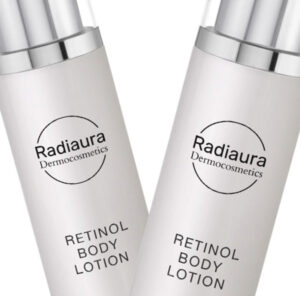May 19, 2025
The Science Behind Mineral Sunscreens: How They Protect Your Skin Naturally

Introduction
Wearing sunscreen is a must if you want healthy, youthful skin. It may seem simple, but knowing how sunscreen works makes a big difference. Mineral sunscreens are popular for several reasons, including their reef-safe properties and lower risk of irritation or hormone disruption. Mineral sunscreens, also known as inorganic or physical sunscreens, use mineral-based ingredients, such as zinc oxide or titanium dioxide, that sit on the skin’s surface, and both absorb as well as reflect and scatter UV rays. Advancements in formulations have made mineral sunscreens lighter and more cosmetically elegant. In this article, you’ll learn about the science behind these sunscreens. We’ll cover how they block harmful UV rays; what ingredients make them special, their benefits, and tips for applying them correctly.
“Mineral sunscreens are popular for several reasons, including their reef-safe properties and lower risk of irritation or hormone disruption.”
Understanding Ultraviolet (UV) Radiation and Its Effects
The Different Types of UV Rays: UVA, UVB, and UVC
UV rays are invisible sunlight that can harm your skin. There are three types: UVA, UVB, and UVC. UVA rays go deeper in the skin to the dermis, causing wrinkles and aging. UVA rays can also pass through window glass. UVB rays stay more in the outermost layers of the skin, leading to sunburn and skin damage. UVC rays are mostly blocked by the atmosphere, but they can be found in artificial sources such as fluorescent light. UV rays, particularly UVA and UVB, contribute to an increased risk of skin cancer. Broad spectrum UVB and UVA protection and regular application in sufficient amounts are essential for prevention of skin cancers, UV-induced immunosuppression, and skin aging1.
High Energy Visible (HEV) Light
HEV light is a part of the visible light spectrum, specifically in the blue/violet range (400-500 nm). Unlike UV rays, which are invisible, HEV light is visible to the human eye and makes up a significant portion of sunlight. While HEV light is naturally present in sunlight, it is also emitted by digital screens, LED lighting, and fluorescent bulbs. Some research suggests that prolonged exposure to HEV light may contribute to biological skin damage, similar to UVA rays2. Sunscreens with titanium dioxide and zinc oxide have limited effectiveness against HEV light. Formulations that include iron oxides provide enhanced protection against blue light, particularly when paired with zinc oxide3.
Impact of UV Radiation on Skin Cells
When UV rays hit your skin, they cause biological changes. Skin cells can suffer DNA damage, which may lead to skin cancer over time. Prolonged exposure to UV radiation can suppress the skin’s immune system, reducing its ability to detect and repair DNA damage4. UV exposure also creates oxidative stress—free radicals that damage collagen and other tissues. This process accelerates aging, making skin look dull and wrinkled.
The Need for Effective Sun Filters
Sun Protection Factor (SPF) measures the level of UVB radiation that sunscreen can block by either absorbing or reflecting it. The SPF rating indicates how much less UVB radiation reaches the skin when sunscreen is applied. For instance, an SPF 40 sunscreen provides 40 times more protection against UVB rays compared to bare skin. The American Academy of Dermatology recommends using sunscreen with an SPF of 30 or higher for effective protection against harmful UV rays (www.aad.org).
Composition and Science of Mineral Sunscreens
Key Ingredients: Minerals that Shield Your Skin
Mineral sunscreens work by absorbing UV radiation and minimally scattering and reflecting the UV rays5. The main players in mineral sunscreens are zinc oxide and titanium dioxide. These minerals are pure white powders that sit on your skin’s surface. Zinc oxide provides broad-spectrum protection, protecting against both UVA and UVB rays. Titanium dioxide provides more effective UVB protection.
Benefits of Mineral Ingredients Based on Scientific Research
Mineral sunscreens are less likely to cause skin irritation or allergies6. They work well against UVA and UVB rays, offering broad protection. Plus, they don’t break down as quickly in sunlight. This makes them a reliable choice for daily sun safety.
How Mineral Sunscreens Work at the Molecular Level
Physical Barrier Formation
Mineral particles form a protective coat on your skin. They create a physical barrier that blocks UV rays before they reach deeper layers. How evenly these particles spread influences how well your skin is shielded.
Reflection, Scattering, and Absorption of UV Rays
When UV rays hit mineral particles, they bounce off—a process called reflection. Some rays are scattered in different directions, making it harder for them to reach your skin. Mineral filters partly work by absorbing UV rays and physically reflecting and scattering UV rays, providing some immediate protection.
Role of Formulation and Particle Size
Micronizing of zinc oxide and titanium dioxide and encapsulation into nanoparticles (<100 nm diameter) reduces scattering and reflection to decrease the white, chalky appearance on skin5. Particle size needs to balance safety and performance carefully, especially when considering the potential to penetrate the skin.
Benefits and Limitations of Mineral Sunscreens
Health and Environmental Benefits
There are no reports of allergic or photoallergic contact dermatitis from mineral sunscreens, although some of the inactive ingredients in sunscreens can cause contact dermatitis7. Many mineral sunscreens are reef safe, meaning these ingredients are less likely to be absorbed by marine life and cause harm to coral reefs, although some nano-sized particles could still be potentially harmful to marine ecosystems. Since non-nano-sized mineral sunscreens sit on the skin surface, they are less likely to result in endocrine disruption, although when the minerals are nano-sized, they can potentially be absorbed into the body more easily and could result in endocrine effects.
Practical Tips for Using Mineral Sunscreens Effectively
Proper Application and Reapplication
Apply sunscreen at least 15 minutes before sun exposure. Don’t forget tricky spots like ears, behind the neck, and under the chin. Reapply every two hours or after swimming or sweating heavily for maximum defense. For children over the age of 6 months, broad-spectrum, SPF of 30+ is recommended by the American Academy of Dermatology. For infants less than 6 months, sun avoidance and physical protection are recommended in lieu of sunscreen (https://www.aad.org/public/diseases/skin-cancer/prevent/sun-babies).
Complementary Sun Protection Measures
Sun protection isn’t just about sunscreen. Wear clothing that covers your skin, use wide-brimmed hats, and seek shade.
Selecting the Right Mineral Sunscreen
Check the label for active ingredients—look for zinc oxide or titanium dioxide. Think about your skin type and sensitivities. If your skin reacts easily, opt for a gentle, fragrance-free formula.
Conclusion
Mineral sunscreens work by creating a physical shield that not only absorbs but reflects and scatters harmful UV rays, making them a safe choice for many. Scientific studies back their ability to protect your skin from aging and cancer-causing damage. When choosing a mineral sunscreen, pay attention to ingredients, formulation, and proper application. Consistency is key—stick with your sun protection routine for healthy, youthful skin. Remember, good sun habits shield you not just from the sun, but also help maintain your skin’s health for years to come.
References
- Bens G. Sunscreens. Adv Exp Med Biol. 2014;810:429-63. doi: 10.1007/978-1-4939-0437-2_25. PubMed PMID: 25207381.
- Le Digabel J, Filiol J, Lauze C, Redoulès D, Josse G. In vivo method for evaluating sunscreen protection against high-energy visible light. J Eur Acad Dermatol Venereol. 2023;37 Suppl 6:6-11. doi: 10.1111/jdv.19243. PubMed PMID: 37671998.
- Bernstein EF, Sarkas HW, Boland P. Iron oxides in novel skin care formulations attenuate blue light for enhanced protection against skin damage. J Cosmet Dermatol. 2021;20(2):532-7. Epub 20201118. doi: 10.1111/jocd.13803. PubMed PMID: 33210401; PMCID: PMC7894303.
- Raymond-Lezman JR, Riskin SI. Sunscreen Safety and Efficacy for the Prevention of Cutaneous Neoplasm. Cureus. 2024;16(3):e56369. Epub 20240318. doi: 10.7759/cureus.56369. PubMed PMID: 38633930; PMCID: PMC11022667.
- Abdel Azim S, Bainvoll L, Vecerek N, DeLeo VA, Adler BL. Sunscreens part 1: Mechanisms and efficacy. J Am Acad Dermatol. 2025;92(4):677-86. Epub 20240519. doi: 10.1016/j.jaad.2024.02.065. PubMed PMID: 38772426.
- Keyes E, Werth VP, Brod B. Potential allergenicity of commonly sold high SPF broad spectrum sunscreens in the United States; from the perspective of patients with autoimmune skin disease. Int J Womens Dermatol. 2019;5(4):227-32. Epub 20190523. doi: 10.1016/j.ijwd.2019.05.006. PubMed PMID: 31700977; PMCID: PMC6831754.
- Ekstein SF, Hylwa S. Sunscreens: A Review of UV Filters and Their Allergic Potential. Dermatitis. 2023;34(3):176-90. Epub 20230102. doi: 10.1097/der.0000000000000963. PubMed PMID: 36279254.


